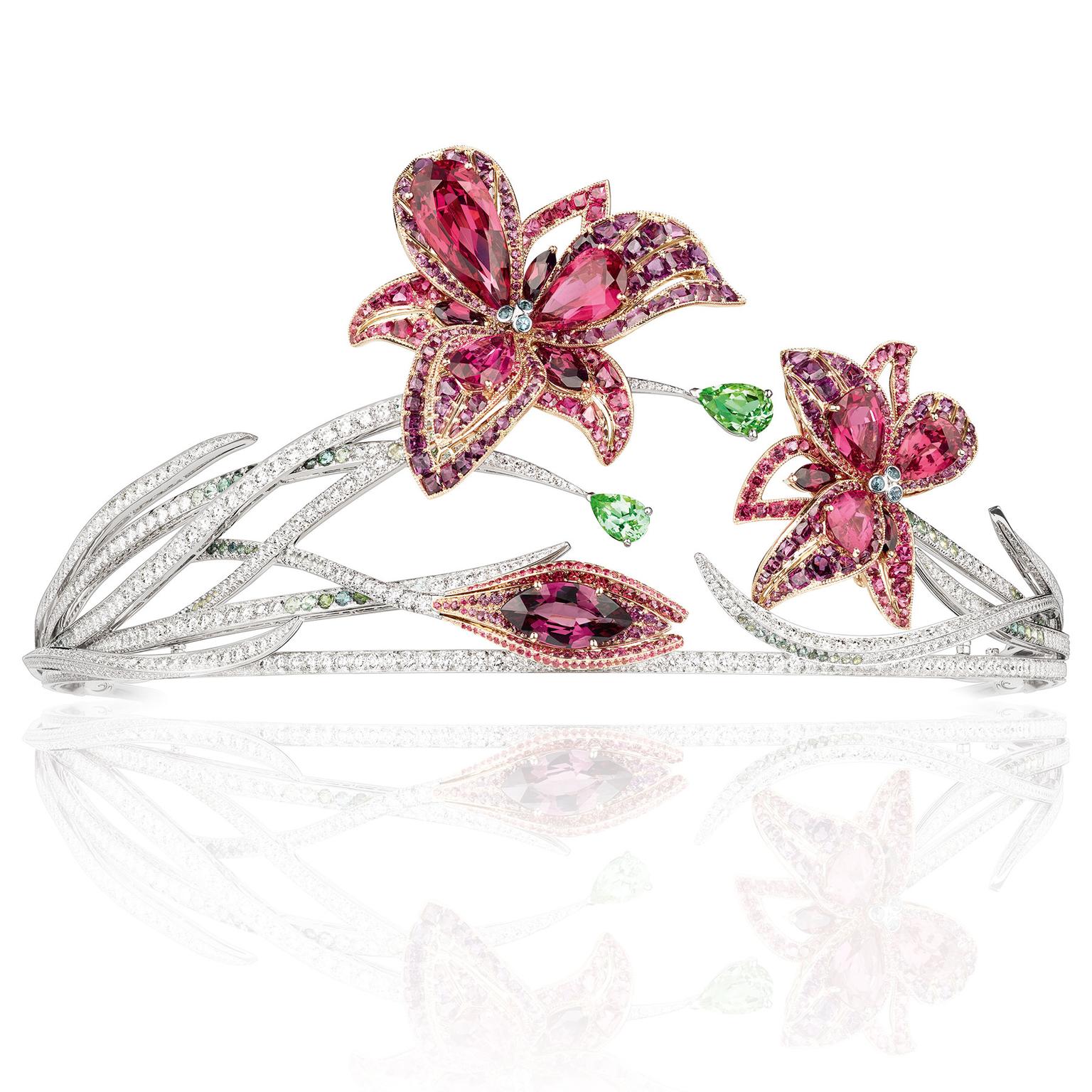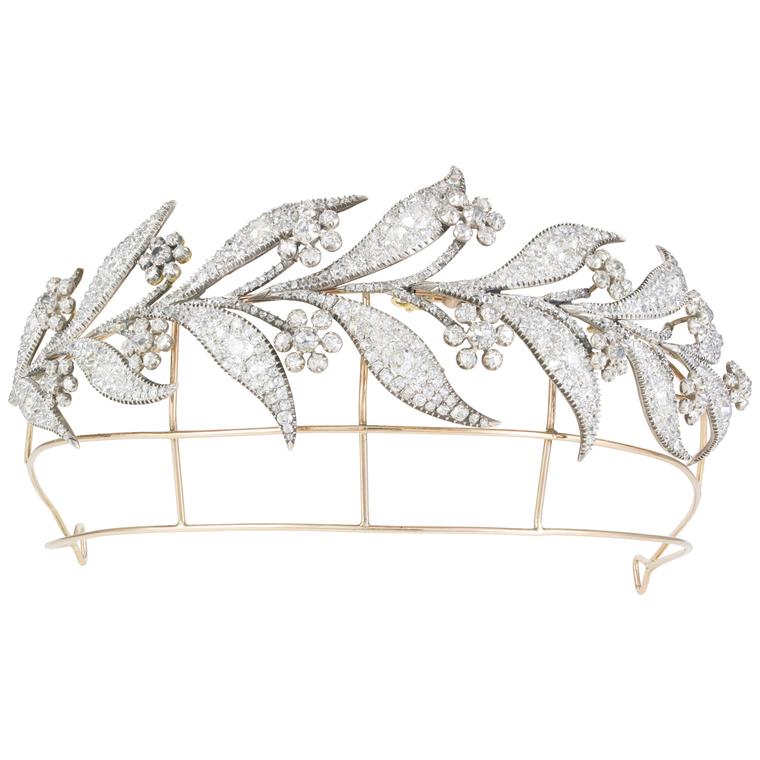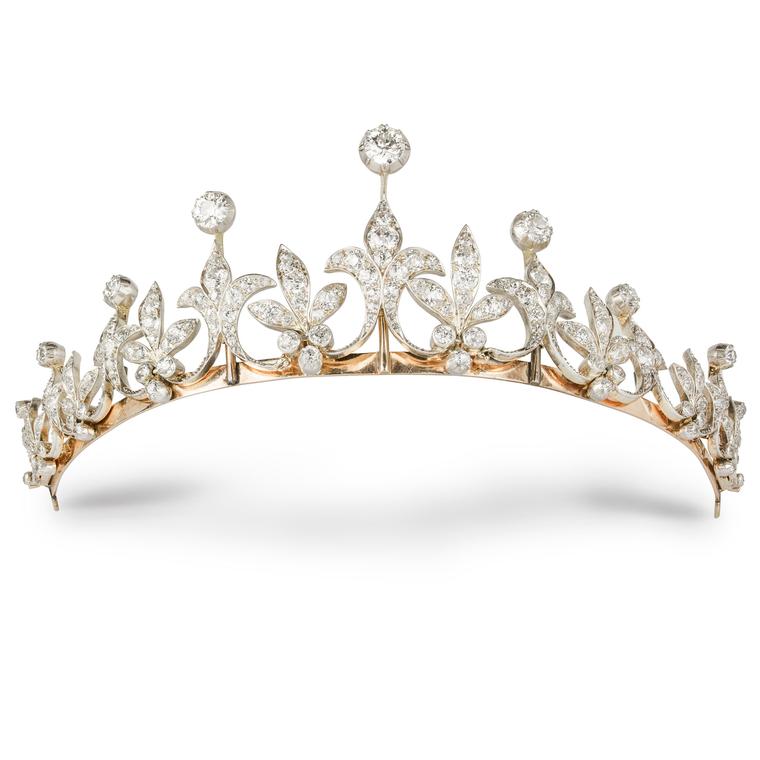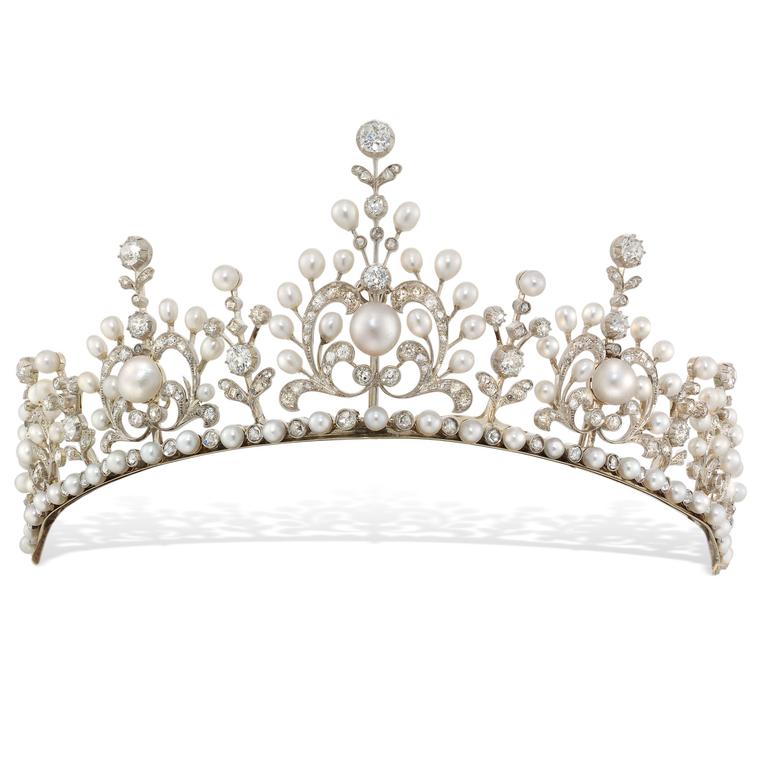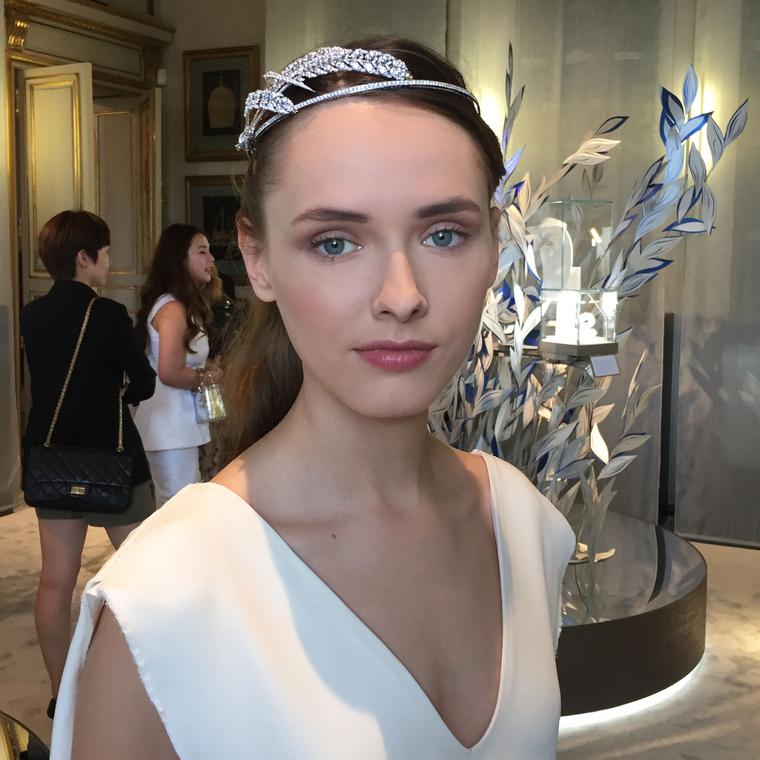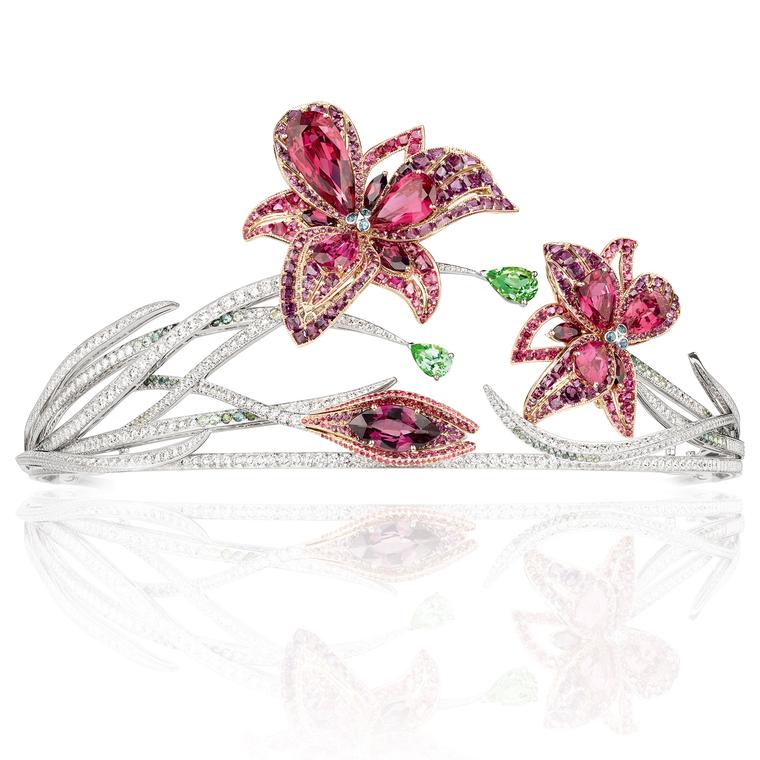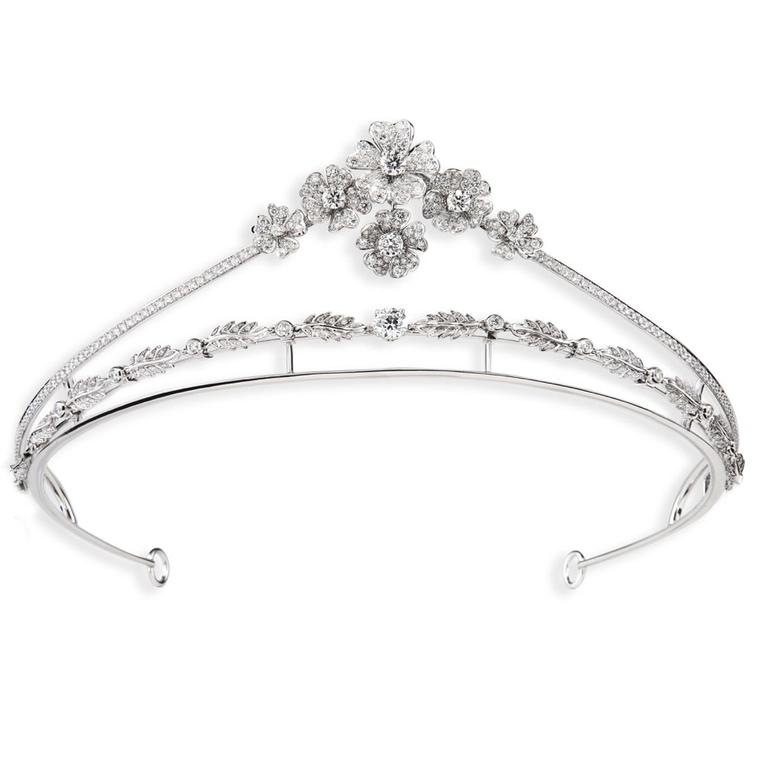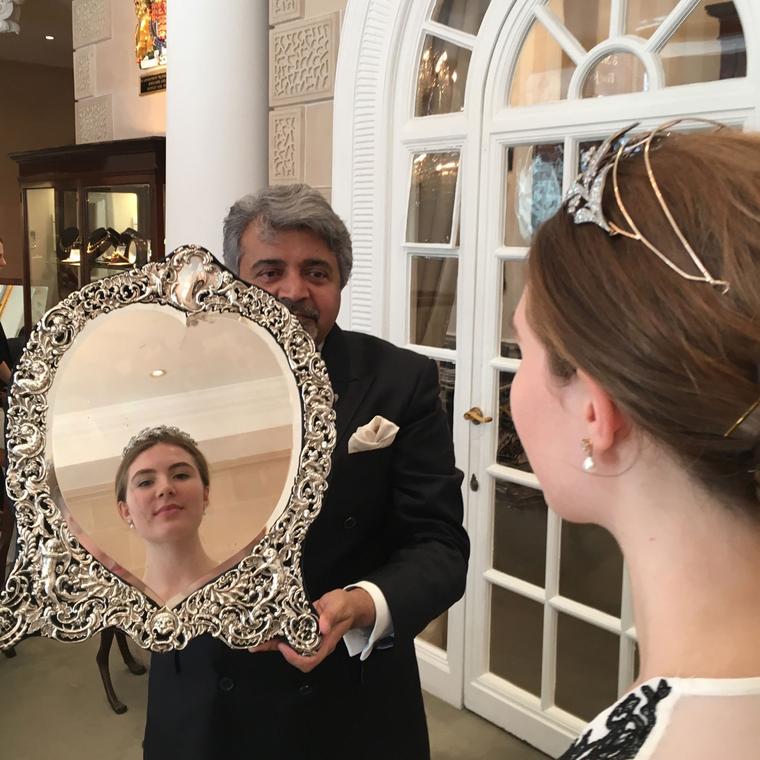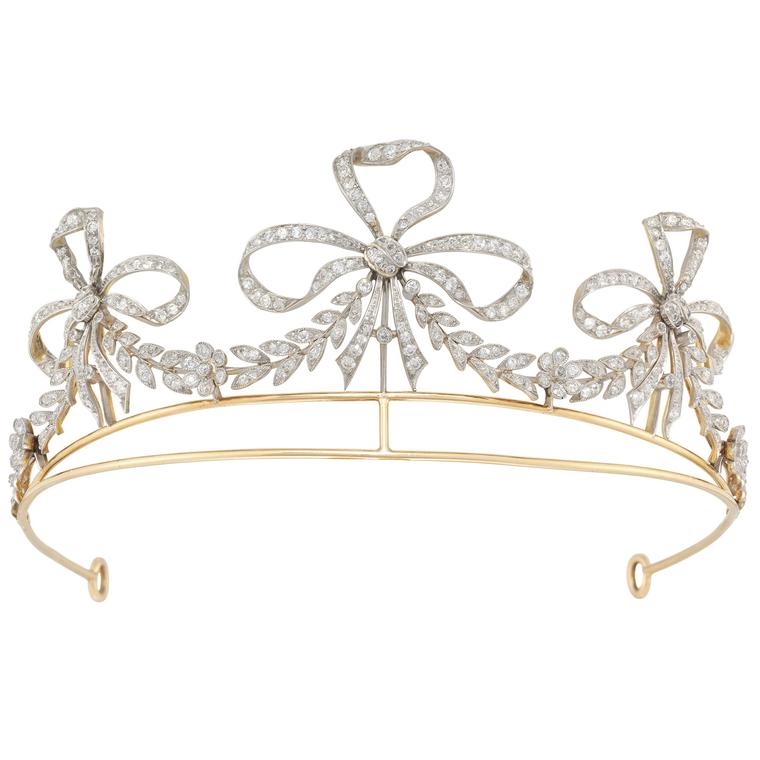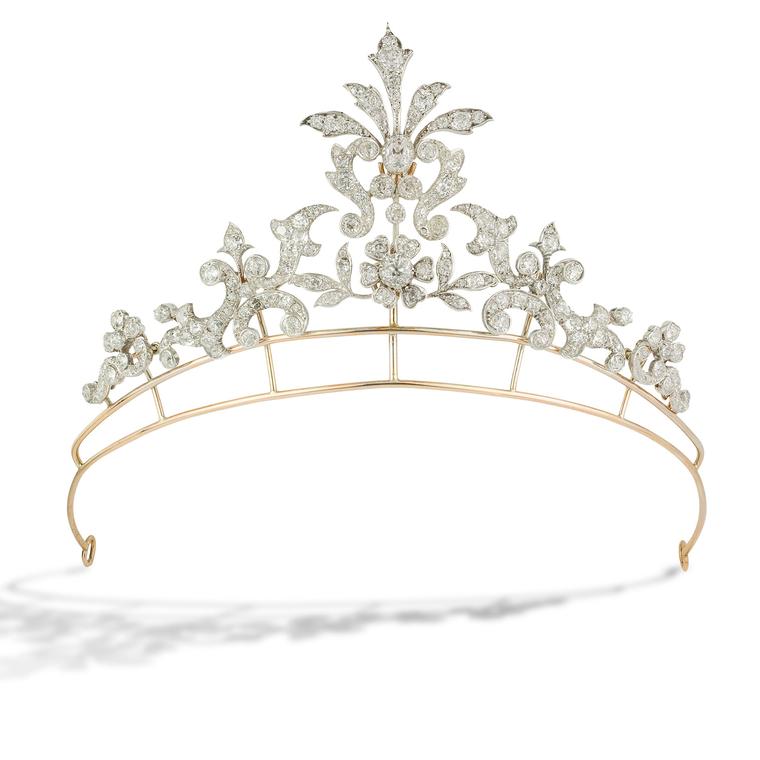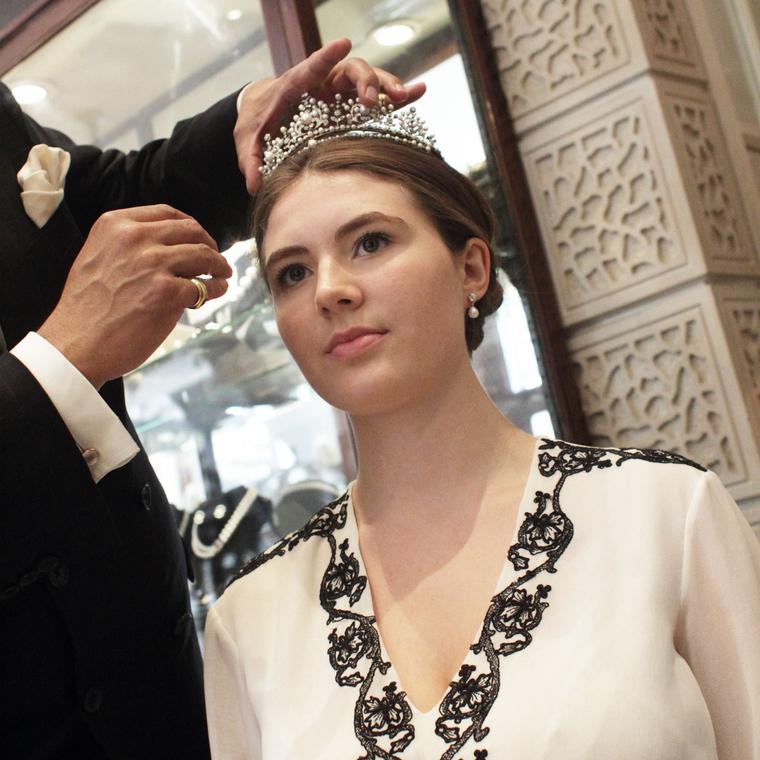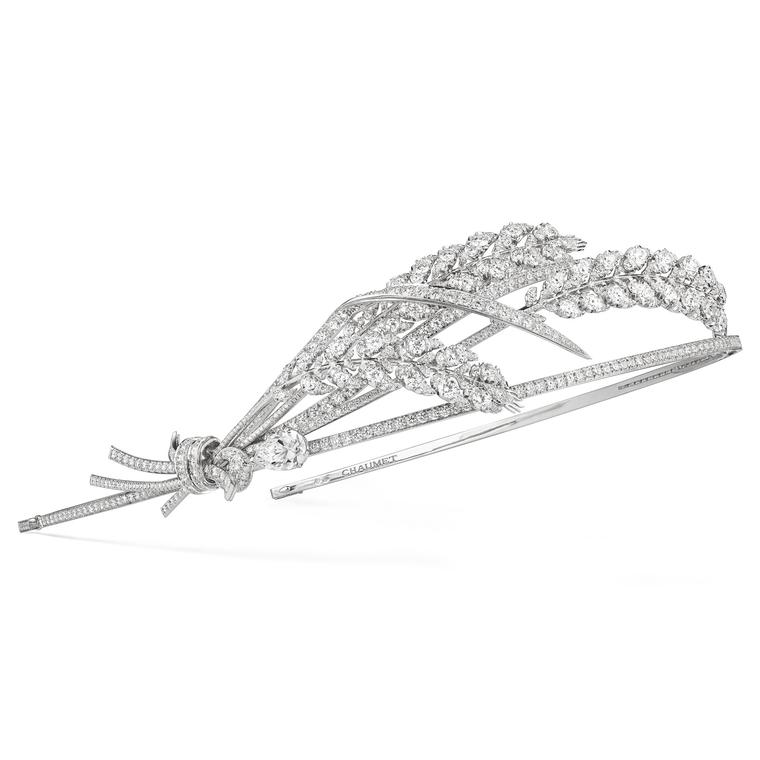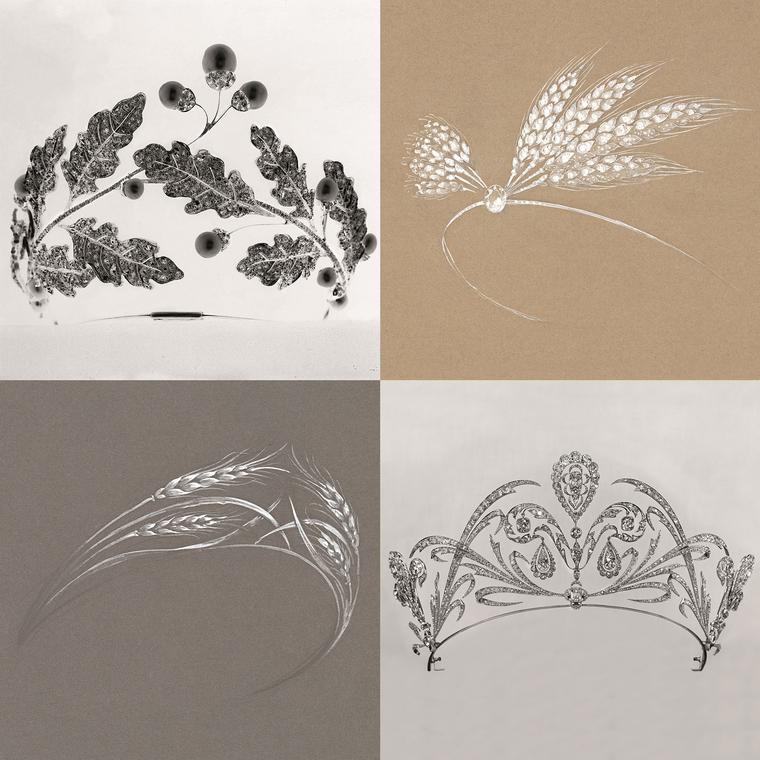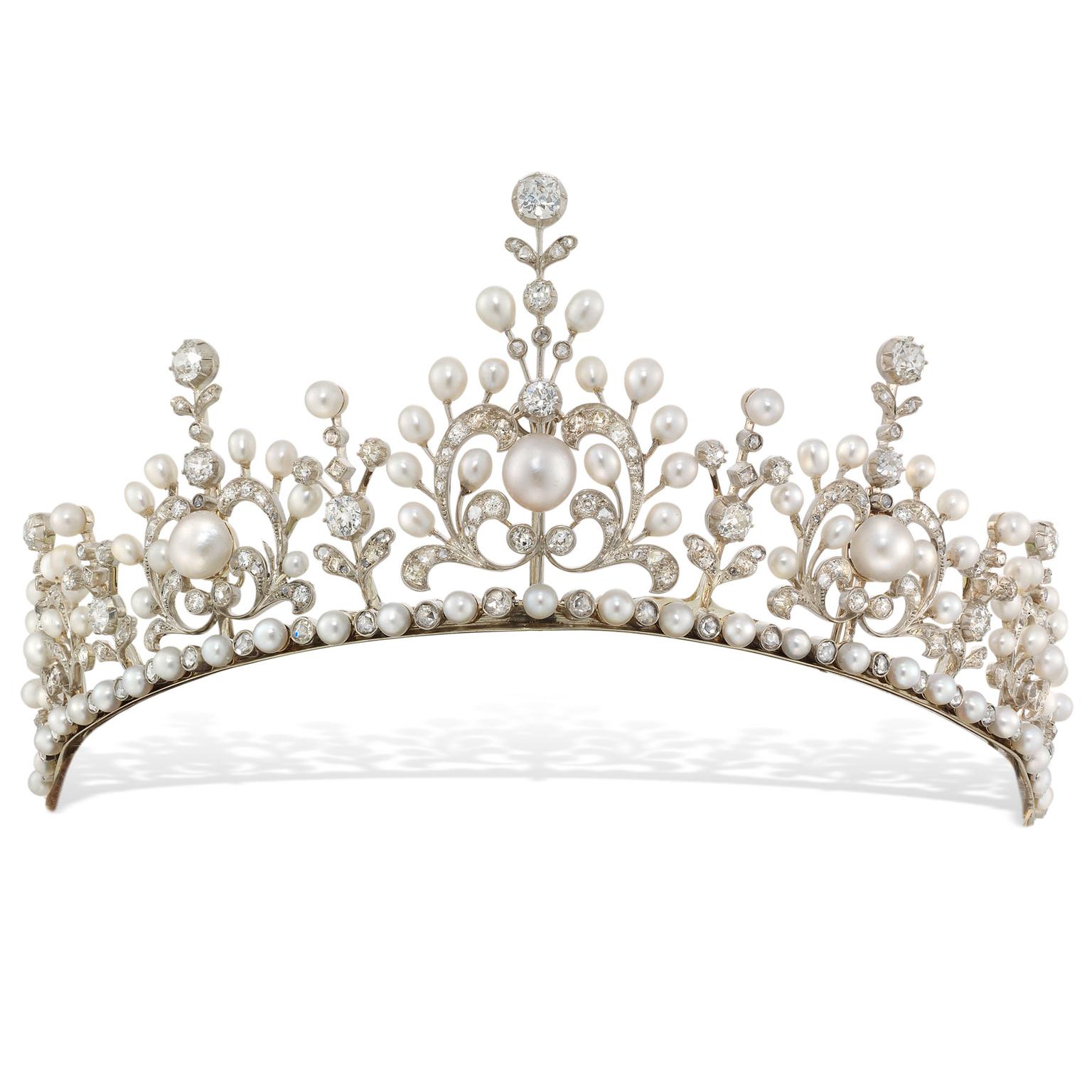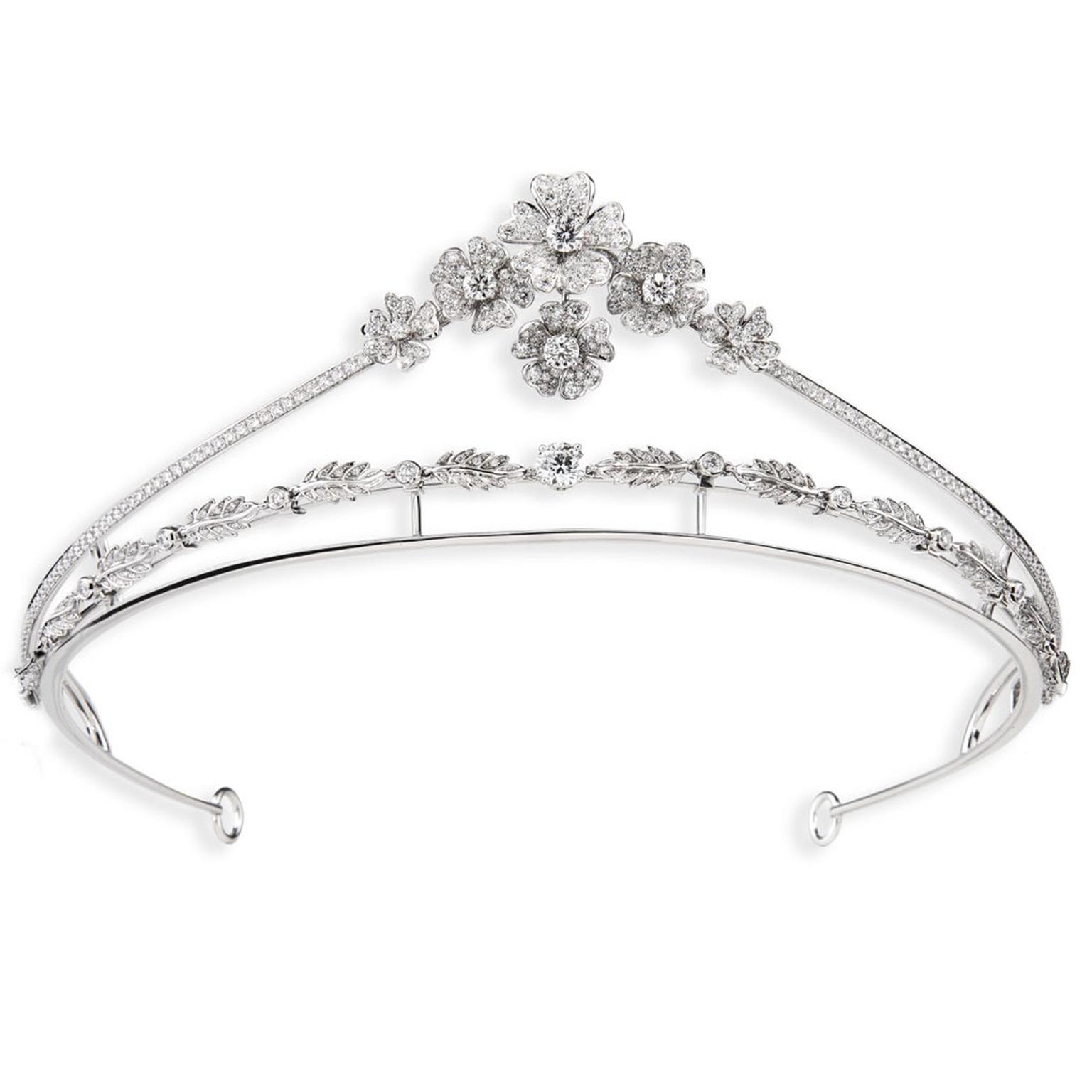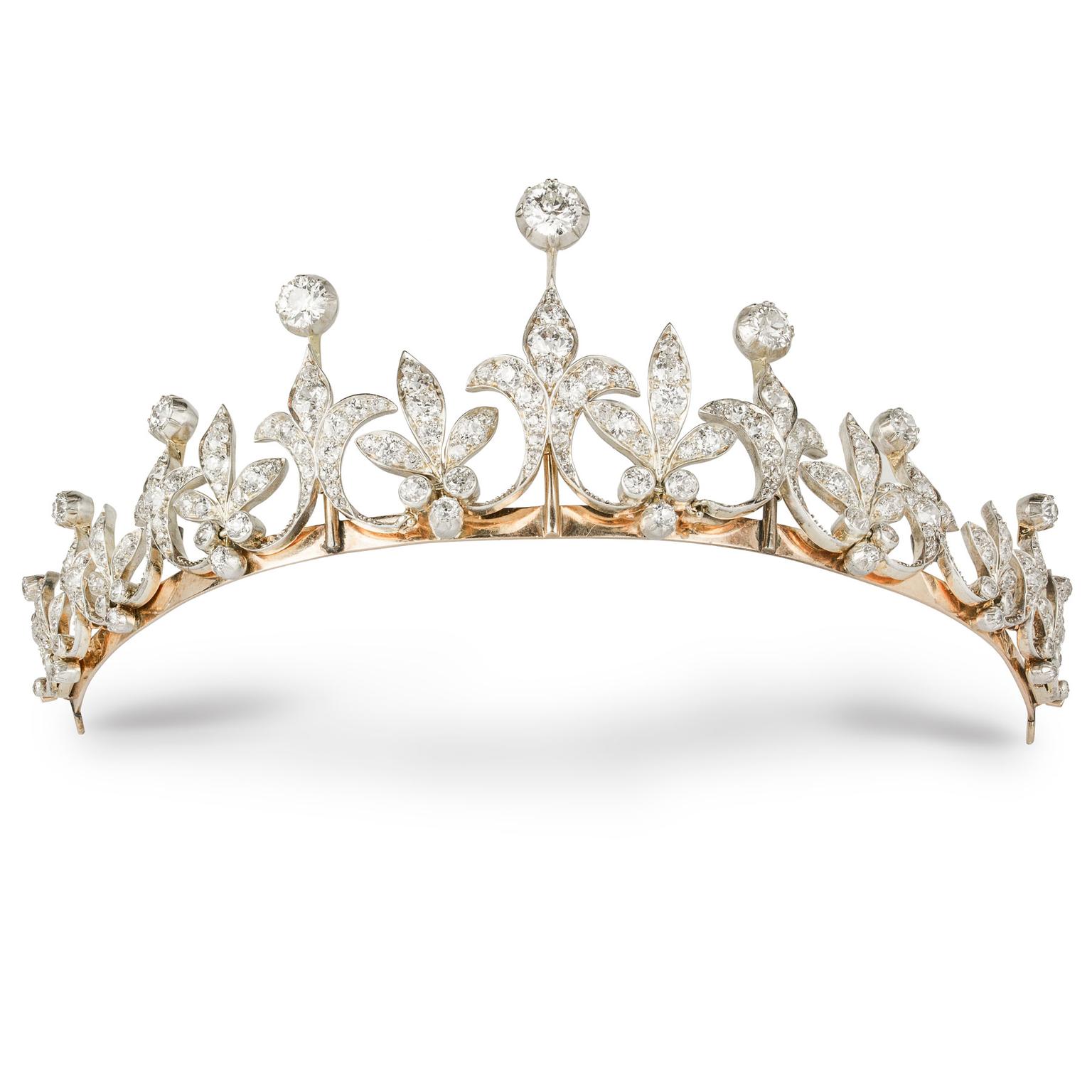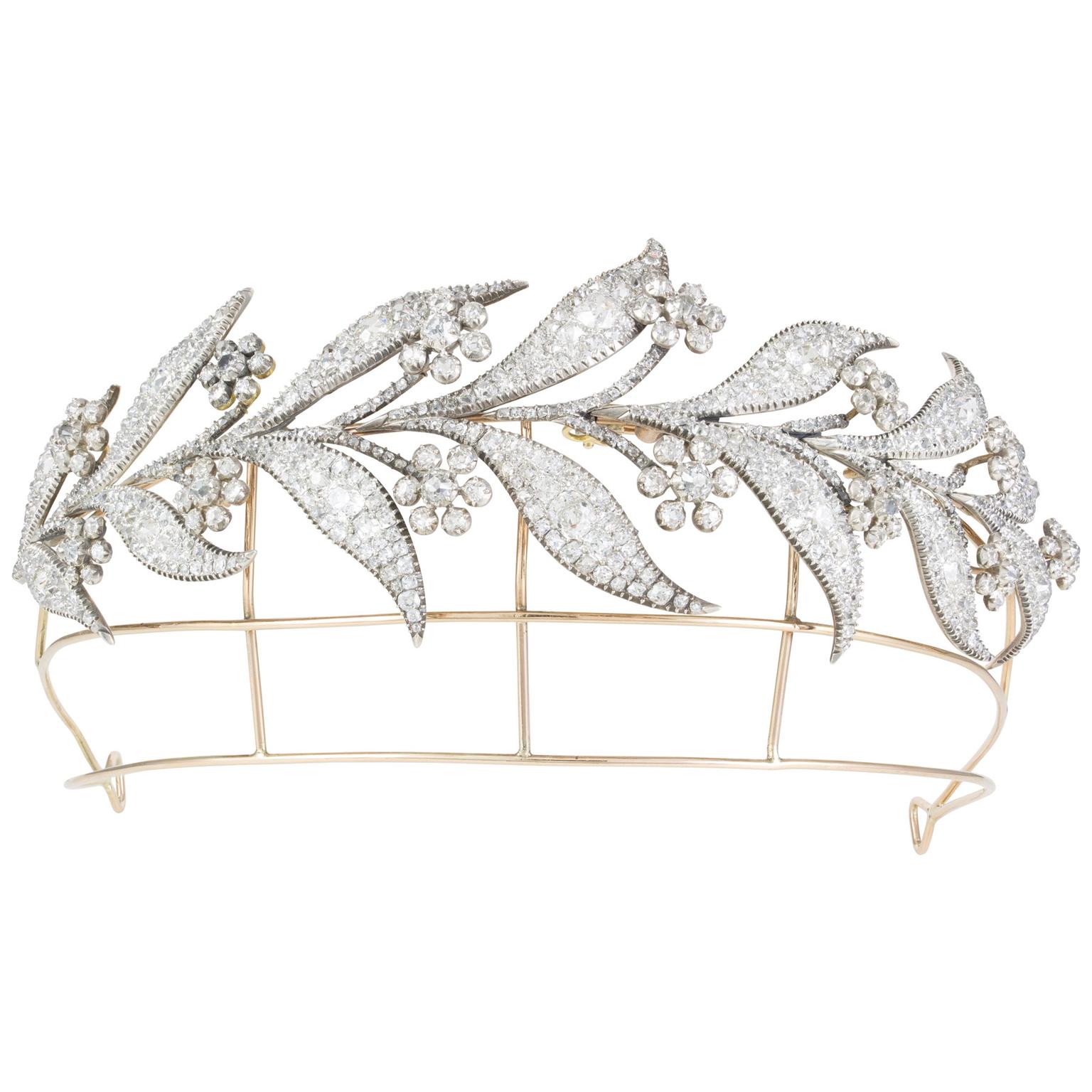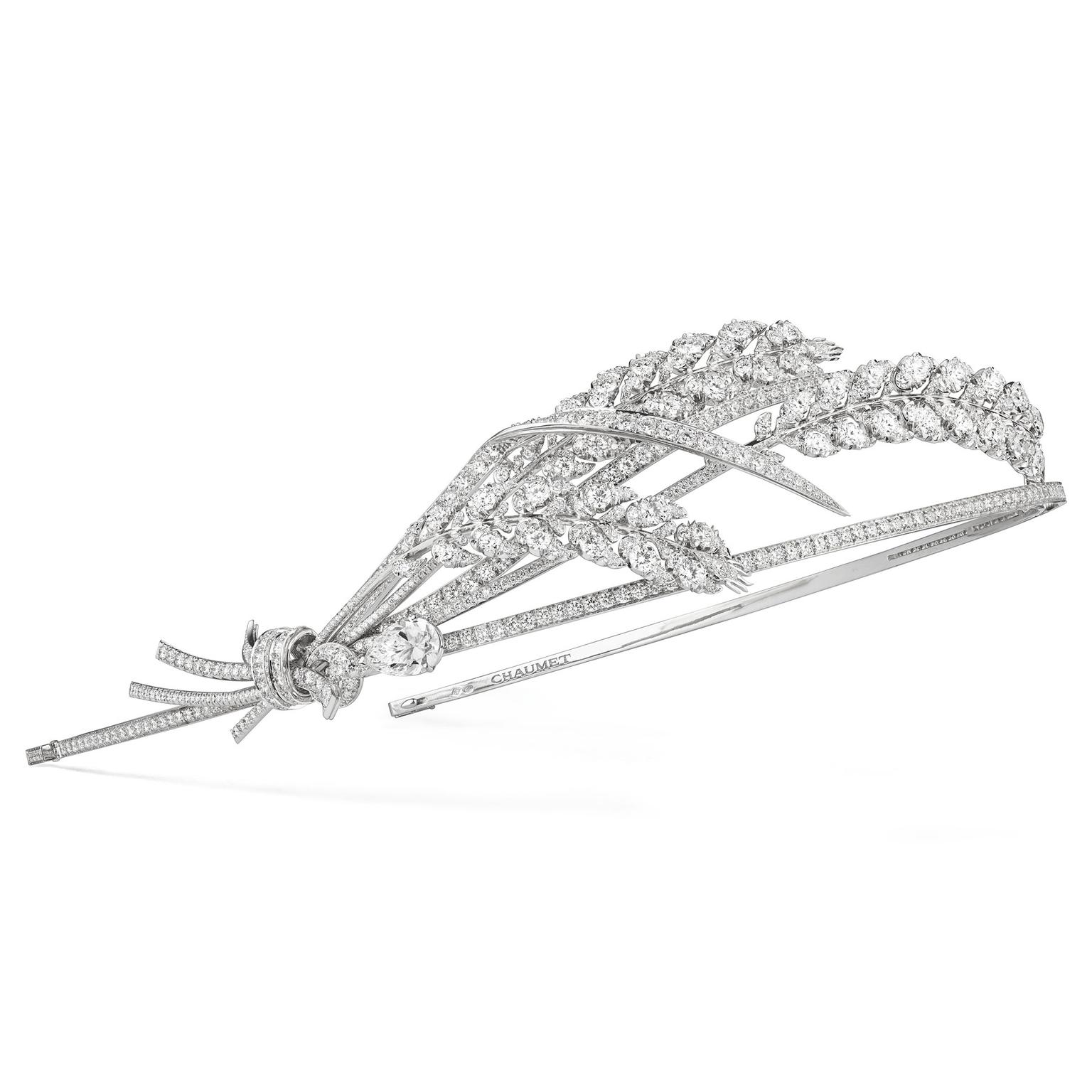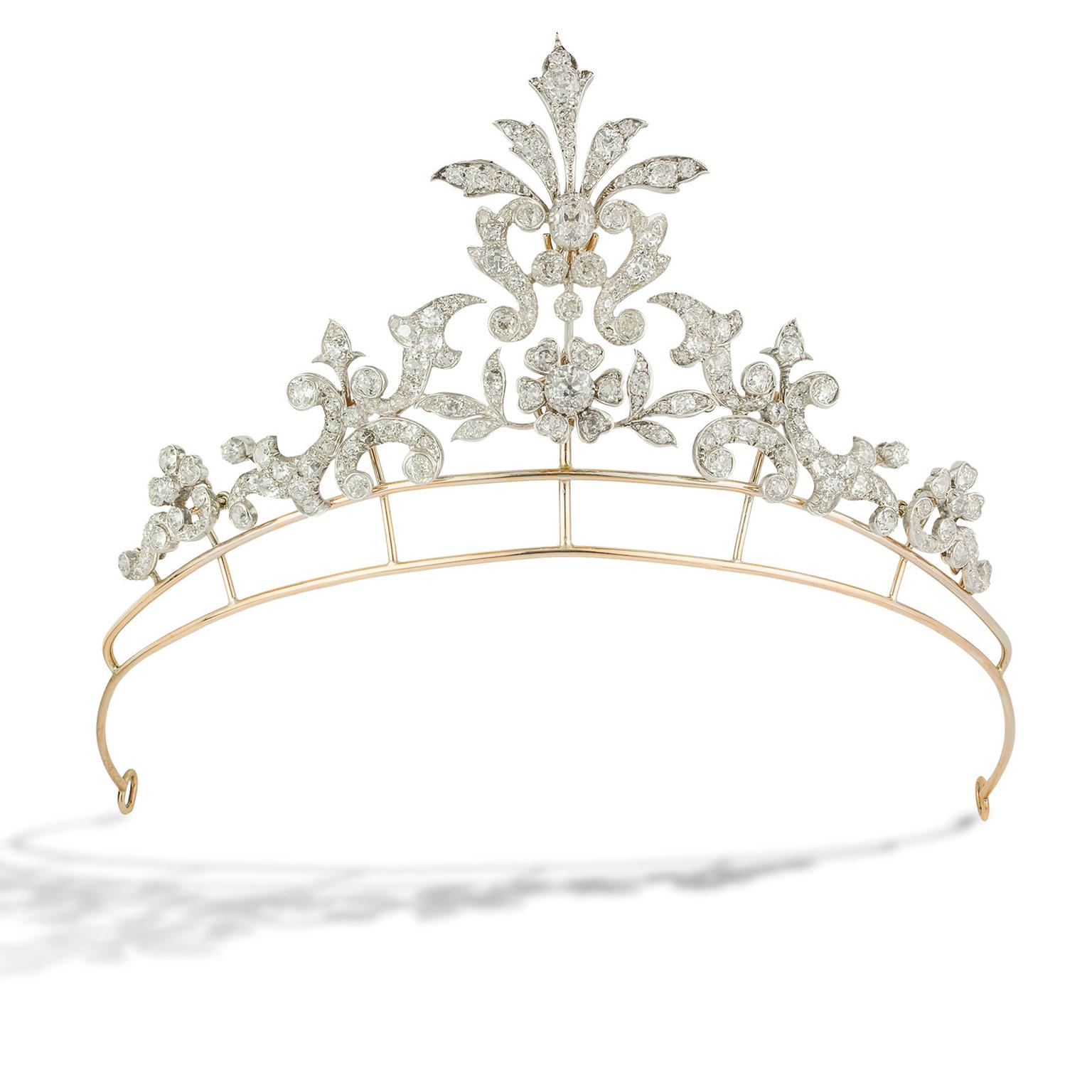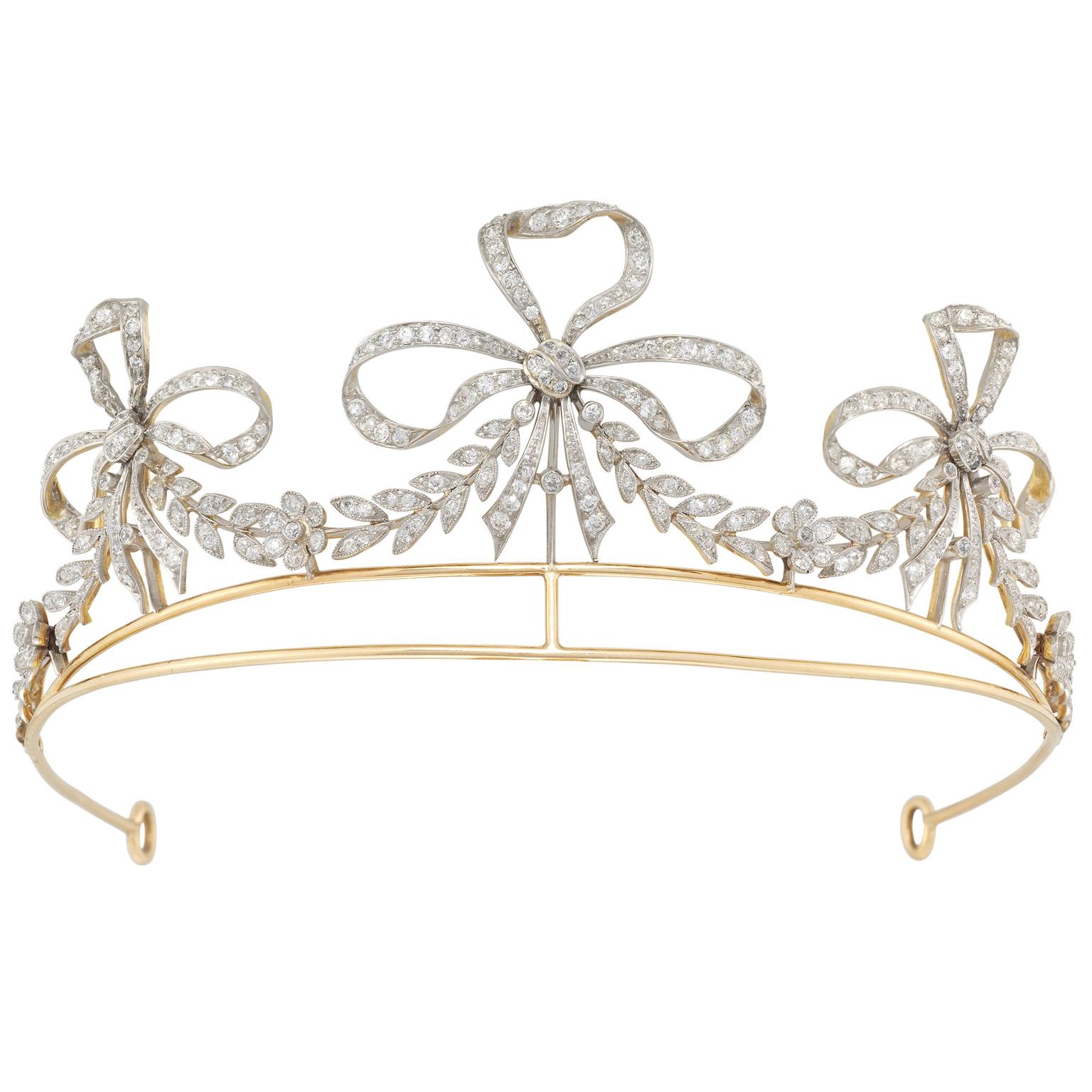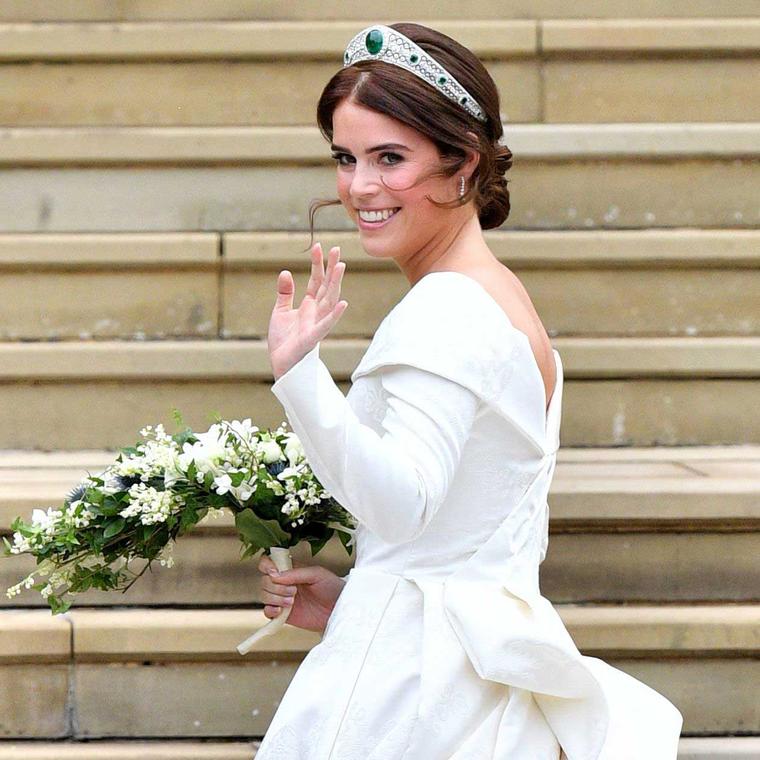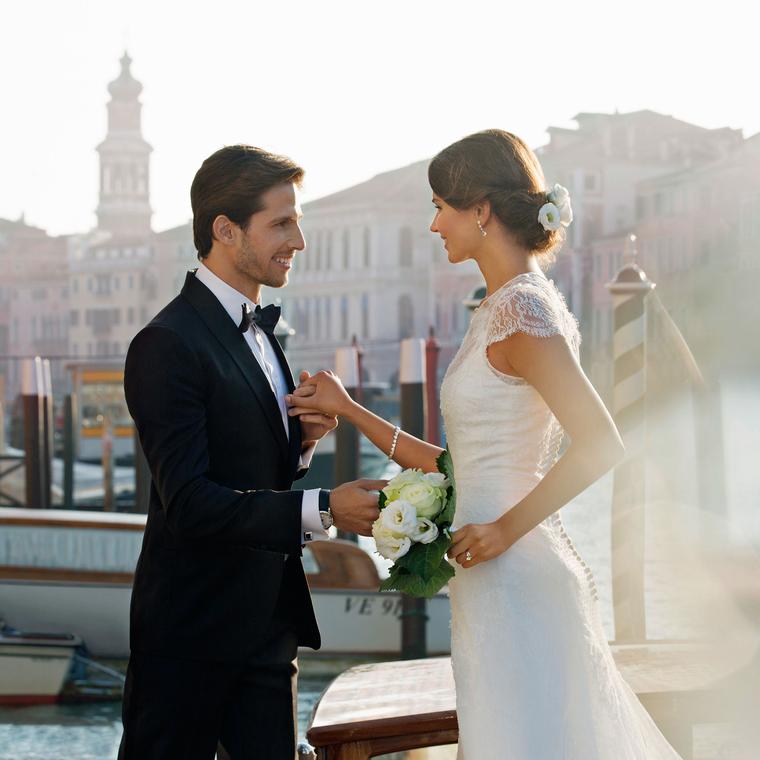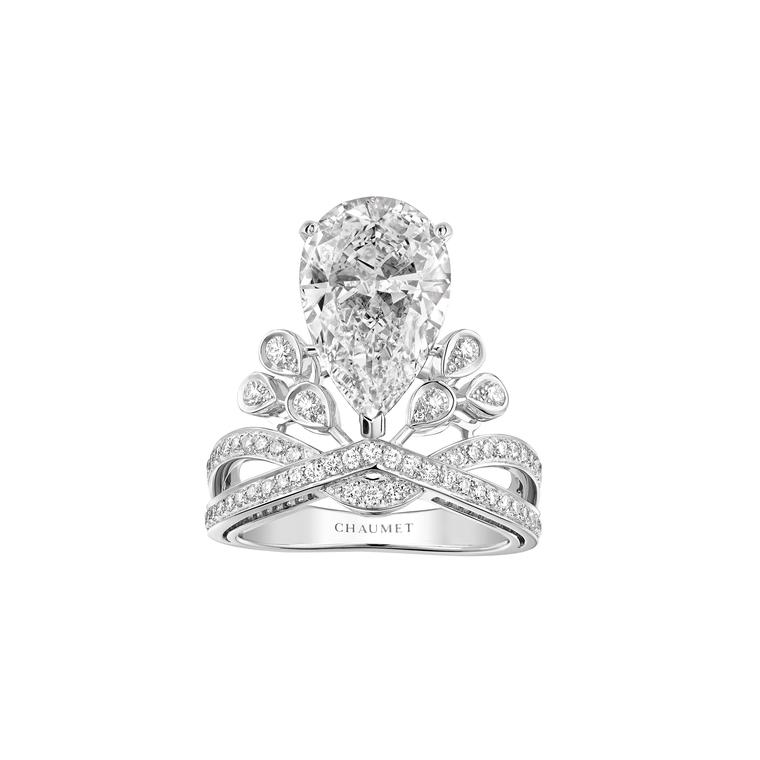For our latest video, I travelled to Paris and London to hunt down a selection of the most beautiful tiaras to make your wedding perfect.
On the way, I picked up some very valuable advice to help guide you to finding your ideal tiara, but first let's look at the symbolism of tiaras, and their long and storied history.
The meaning of tiaras
According to jewellery historian Geoffrey Munn, tiara originally referred to the purple band with white decorations worn by Persian kings. “But now,” he writes in his book Tiaras, a History of Splendour, “the word is used as a generic term that embraces diadems, circlets, wreaths and kokoshniks [traditional Russian head dresses].”
The Ancient Greeks wore gold wreaths known as stephanoi, which took the form of lifelike sprays of oak, ivy, laurel or olive, and even included insects. These are perhaps the closest in style to modern-day tiaras, though over the centuries a wide range of styles of head ornaments has evolved, including coronets, diadems, aigrettes, hair combs, headbands and circlets.
A brief history of headpieces
A tiara is the most flattering and magnificent jewel a woman can wear. Sitting high on the head, it is a lofty and highly visible indicator of royalty or status. Of course, such a prestigious jewel comes with a rich history, one that was revived the very instant the world had their first glimpse of Kate Middleton's tiara as she stepped onto the aisle of Westminster Abbey - a 1936 Cartier London platinum and diamond Halo headpiece with scroll motifs, loaned to her by Her Majesty the Queen. Downton Abbey further fanned the flames of tiara mania, and in particular Lady Mary’s wedding tiara, which further piqued our interest in tiaras and all aristocratic paraphernalia. The very finest examples are hugely valuable. The most expensive tiara in the world belonged to Princess Katharina Henckel von Donnersmark, whose emerald and diamond headpiece from the early 1900s became the most valuable tiara ever sold at auction in 2011 when it changed hands for £7.8 million.
The market for bridal tiaras has always existed, and the connection dates back to the golden wreaths given by Ancient Greek women to the gods as thanks for marriage. In Medieval times, tiaras were often loaded with Christian and Gothic symbolism and were a token of betrothal and the promise of a good marriage.
In the 17th and 18th century, high-ranking ladies, a status that implied an obligation to defend the realm, wore diadems in the form of stylised helmets. The extravagant excesses of the Rococo styles under Louis XV gave way to the Neoclassic look revived by Napoleon Bonaparte (1769-1821). Napoleon’s obsession with jewels and rank encouraged a tiara-making furore, a tradition still alive at Chaumet, Napoleon’s jeweller of choice. During this era, new styles of wearing head ornaments emerged from the simple gold wreath that Napoleon wore on his coronation to cameo-laden diadems. The vogue for head ornaments spread from Paris to the rest of Europe and beyond.
Advance planning essential
Whether you are after a spectacular antique tiara, perhaps the very one that Lady Mary wore for her Downton Abbey wedding, or a contemporary creation, make sure you plan well in advance. In fact, start planning your tiara along with the wedding dress. Wear a top with a similar neckline to that of your wedding dress so that you can see the effect of the tiara and your bodice combined. Bear in mind that the style of the tiara and the dress should be complementary. Lady Mary got it just right: her 1920s dress, with its clean, unfussy lines and straight neckline, was perfectly matched with her diamond tiara, worn as a headband with a simple veil draped on top.
Find out the true story behind the Downton Abbey tiara here
Where can I buy a real tiara?
A good place to start your tiara hunt is at Bentley & Skinner on London’s famous Piccadilly. Experts in tiaras and fine antique jewels, Bentley & Skinner are by Royal Appointment to Her Majesty the Queen and His Royal Highness the Prince of Wales, so you will be in good company.
Top tips for tiara shopping
Omar Vaja, Bentley & Skinner's jewellery specialist, explains that choosing a tiara is all about proportion. As the largest jewel you are ever likely to wear, getting the proportions right is key. Petite brides should avoid large tiaras but opt for smaller, tall but light ones that sit high on the head creating the effect of height, like their American tiara from 1890 (£45,000) or their Belle Epoque headpiece from 1900 (£39,750).
A tiara that has a central focus is perfect for round faces, like the late Victorian natural pearl and diamond one from 1910 (£145,000) or the early 20th century American scroll tiara with its charming ribbon motifs (£45,000). Angular faces are flattered by softer shapes or a headband style such as the 1800s one that was worn by Lady Mary in her Downton Abbey wedding (£145,000). Tall brides should avoid dwarfing the groom with an extra five inches of headgear.
Also bear in mind the setting of your wedding. A large, imposing tiara would look out of place at a simple, country church wedding while a St Paul’s Cathedral ceremony would call from a sufficiently grand and magnificent tiara such as the Downton Abbey tiara worn high on the head.
Tiara hairstyles and trying it out for size - and comfort
Working on the set of our tiara video made clear the need to do a dress rehearsal with your hair stylist. Tiaras can be complicated to place in the hair, often requiring weaving the hair through the frame and securing ribbon, bands or grip fastenings. And most important, you want to be comfortable in your tiara so check for balance and weight by wearing the tiara around the house for several hours. Different tiaras can be worn in different ways meaning that there is not one simple up-do solution but a specific hairstyle for your bridal look.
And even if you are lucky enough to have a tiara in the family, it may need adjusting or adapting to your hair style or head shape, something that could take a few months.
Transformable tiaras - the versatile choice
Consider choosing a tiara that can be transformed into other more wearable jewels as it is not often you can wear a tiara, unless of course you are a member of the royal family. Most antique tiaras do transform and several of those from Bentley & Skinner are versatile . The Downton Abbey tiara becomes two brooches while the pearl and diamond late Victorian one easily transforms into a necklace as do several others.
Made-to-measure tiaras
Paris’ famed Place Vendôme is home to Chaumet, which has been making tiaras since 1780 for the likes of Napoleon’s brides, making this temple of jewels the destination in Paris for bespoke tiaras. The Chaumet museum is a rich archive of sketches, working models and historic tiaras, jaunty feathered aigrettes and all manner of headpieces for weddings that continue to inspire brides today. This year the house presented a simple and very natural wheat motif tiara with an air of classic Greek antiquity that is worn as a less formal head band (POA). A perfect choice if you are aiming for a goddess look on your wedding day or a barefoot beach wedding. An unusual new addition to the tiara array was the Passion Incarnat diadem (POA) which is more of a head band than a tiara. Featuring red spinel lilies, the main flower detaches to form a brooch or necklace.
Paris’ oldest jeweller Mellerio dits Meller has been making jewels for royalty since 1613 and has created this pretty Monte Rosa tiara for modern day princesses. The tiara transforms into earrings, a pendant and a bracelet (€120,000).
Invest in a tiara for your wedding day and as well as having a true fairy tale princess jewel, you can wear the jewels in other ways as you start your own family tradition to hand down to your daughter.


